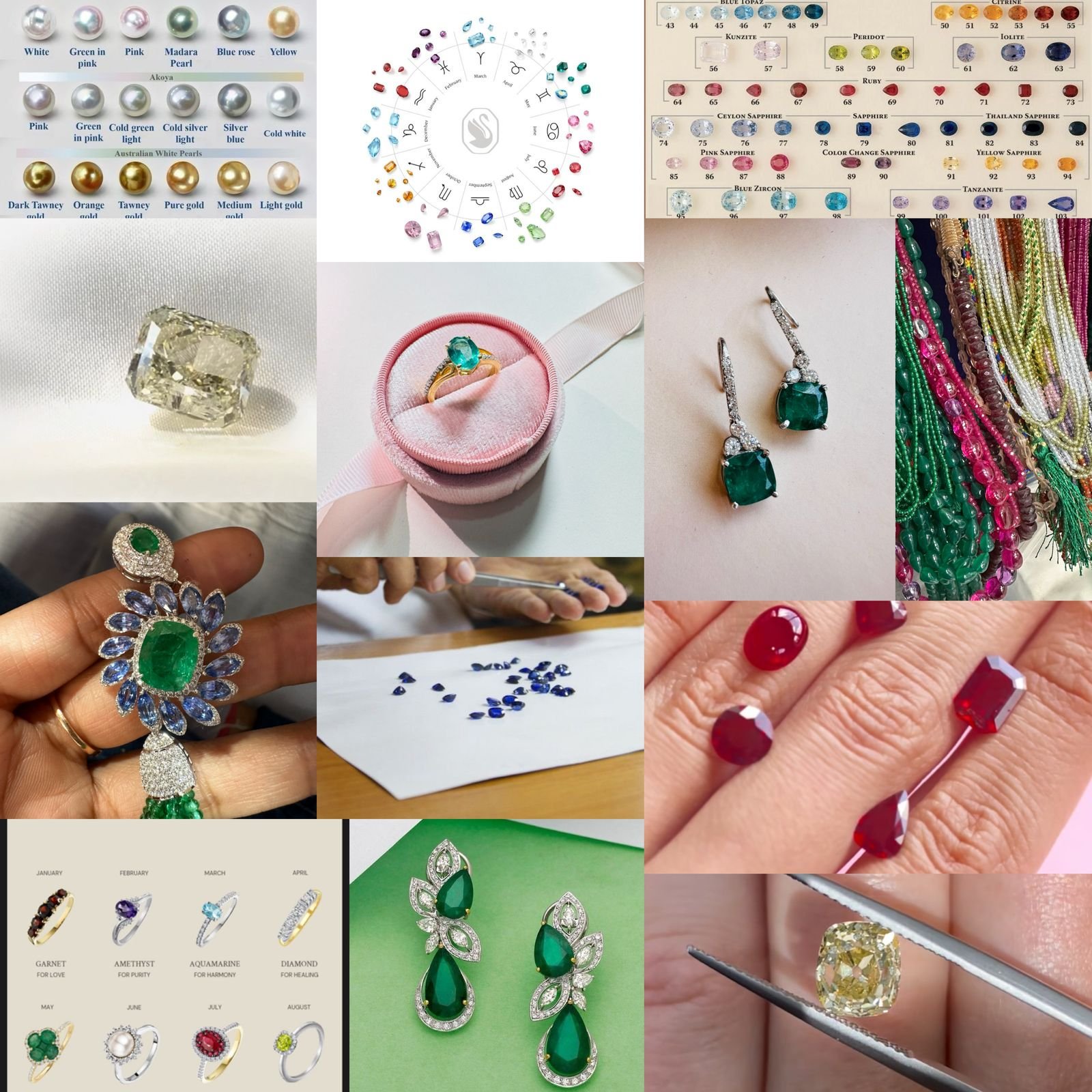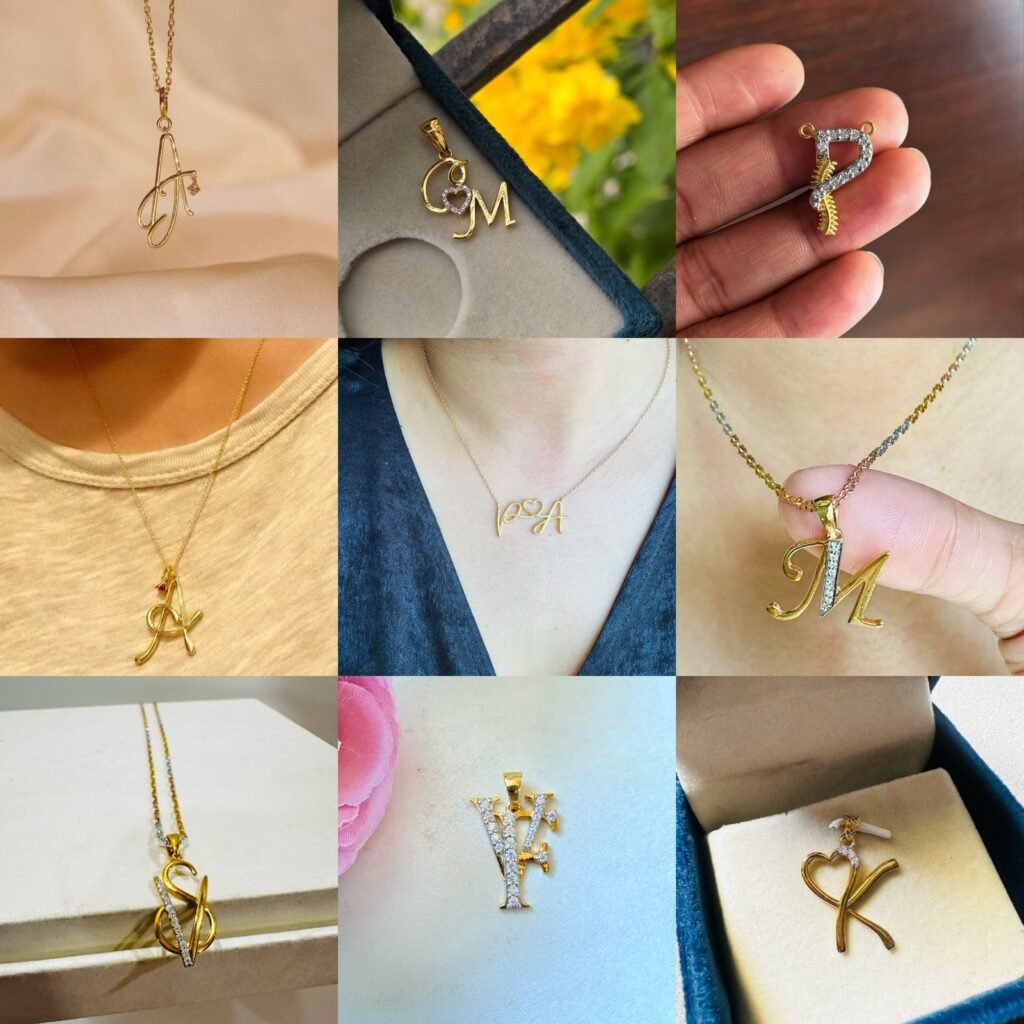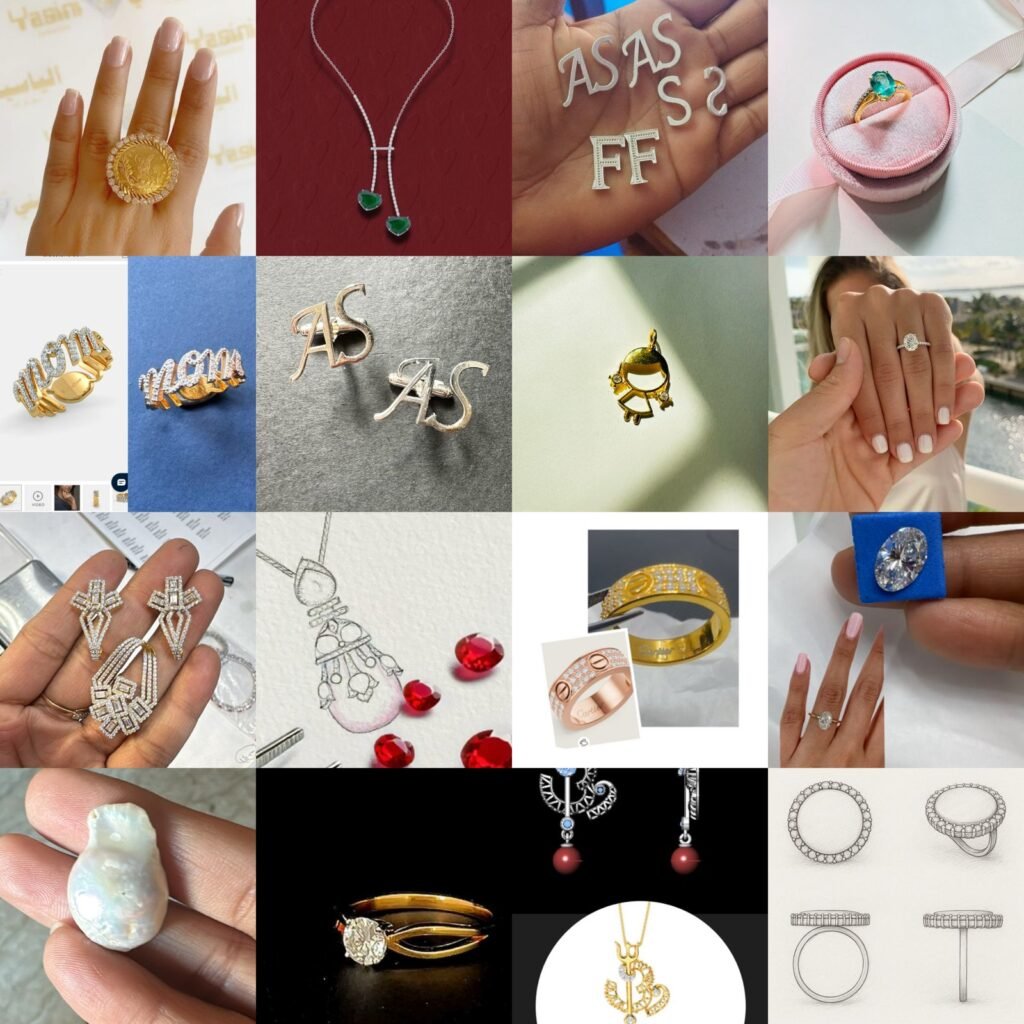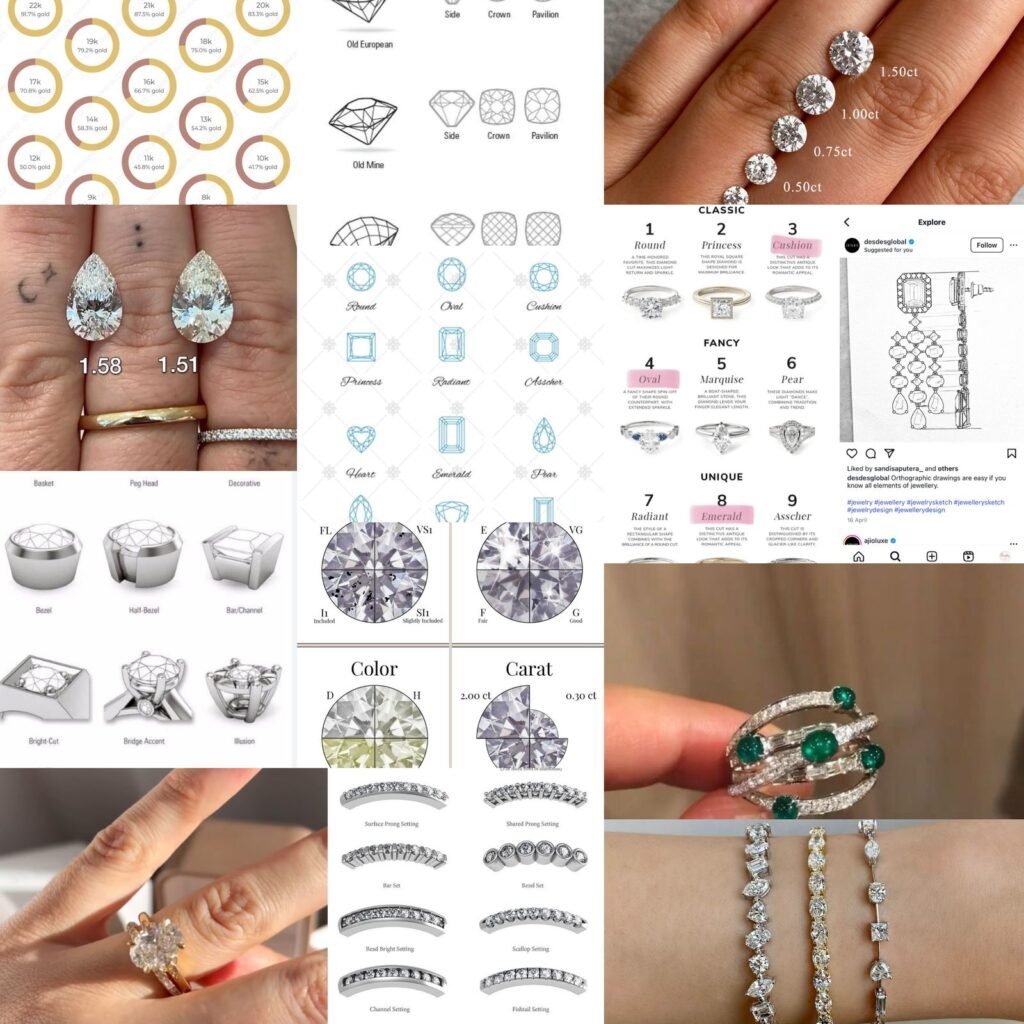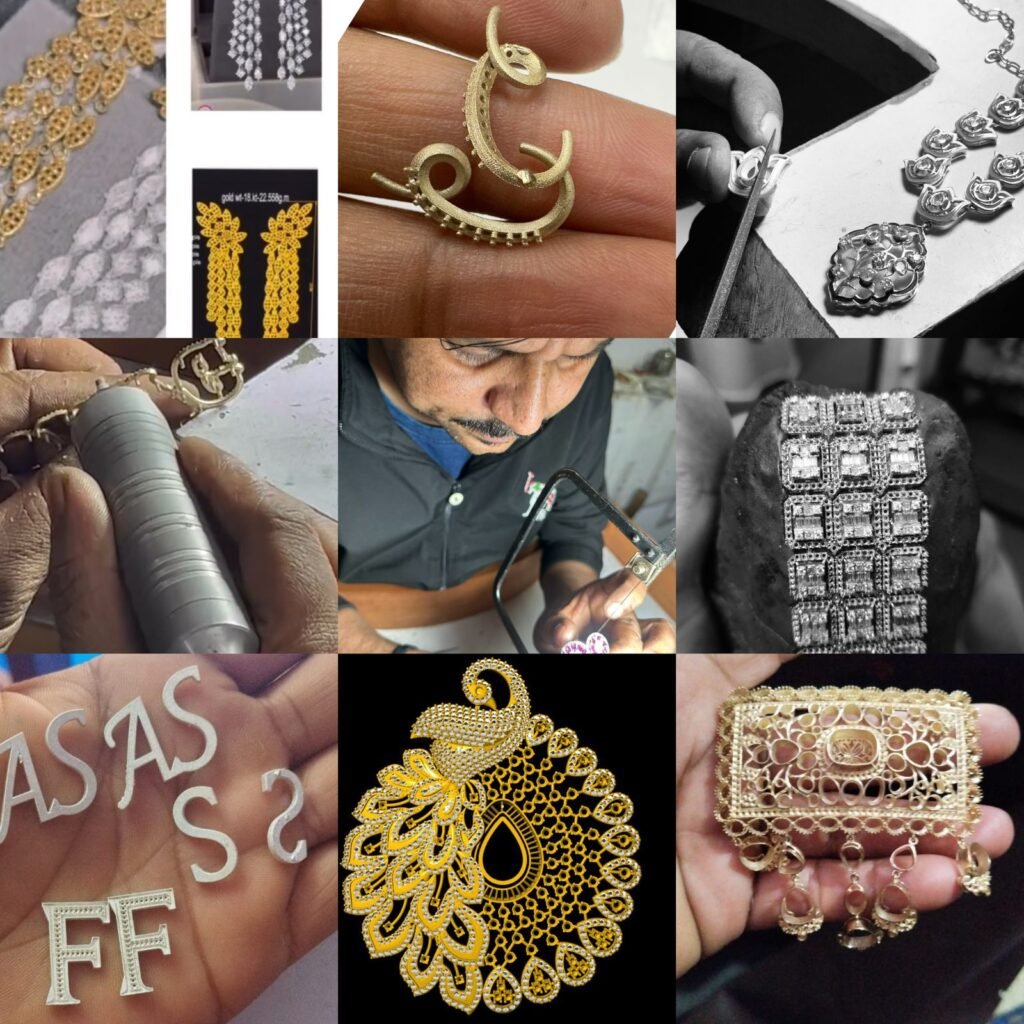Understanding Gemstone Basics: Types and Characteristics
When selecting a gemstone for custom jewelry, it is essential to understand the different types and their unique characteristics. Gemstones can generally be categorized into two groups: precious stones and semi-precious stones. Precious gemstones, which include diamonds, rubies, sapphires, and emeralds, are typically more sought after due to their rarity and remarkable beauty. Semi-precious stones, such as amethyst, aquamarine, and garnet, while more abundant, offer a diverse array of colors, patterns, and affordability, making them popular choices in custom designs.
Key characteristics that influence a gemstone’s overall quality include hardness, clarity, cut, and carat weight. Hardness refers to the stone’s resistance to scratching, measured on the Mohs scale. Diamonds, being the hardest known natural material, rate at a perfect ten, making them ideal for everyday wear. Clarity indicates the presence of internal or external flaws, known as inclusions and blemishes, respectively. A gemstone with high clarity presents a cleaner and more visually appealing appearance.
Cut is the method by which a gemstone is shaped and faceted, significantly impacting its brilliance and overall look. An expert cut can enhance light performance, creating exquisite sparkle and fire. Carat weight informs the size of the gemstone, where one carat equals 200 milligrams. A higher carat weight generally denotes a more prominent and eye-catching stone.
Additionally, understanding the origin of gemstones is crucial. Natural gemstones are sourced from the Earth, while synthetic gemstones are lab-created to mimic their natural counterparts. Treated stones undergo processes to enhance their color or clarity. Being aware of these distinctions can empower consumers to make informed decisions when choosing the perfect gemstone for their custom jewelry, ensuring the end product aligns with their preferences and expectations.
Choosing by Color: The Language of Gemstones
The significance of color in gemstone selection cannot be overstated, as it serves as the primary means of communication when it comes to gemstones. Each color family encompasses a wide range of hues, tones, and saturations, contributing to the unique beauty of individual stones. For instance, blue gemstones can vary from the deep navy of lapis lazuli to the soft azure of aquamarine, presenting a spectrum that can evoke different emotions and preferences.
When selecting a gemstone, understanding color saturation and tone is essential. Saturation refers to the intensity or purity of the color, while tone describes the lightness or darkness of a shade. A gemstone with high saturation and an ideal tone can produce a striking visual impact, making the piece more appealing. Conversely, a stone with dull or overly dark tones might lack vibrancy, detracting from its overall beauty.
In terms of personal style, it is crucial to choose colors that resonate with one’s preferences and complement their skin tone. For example, warm colors like oranges and reds may enhance a warm complexion, while cooler shades such as greens and blues can flatter those with cooler undertones. Additionally, personal aesthetics should be taken into account; individuals drawn to earth tones may prefer gemstones like brown and green, while those who favor vibrant palettes might opt for bold, eye-catching options.
Beyond aesthetics, the emotional significance of colors plays a vital role in gemstone selection. Different colors are often associated with particular feelings or symbolic meanings, allowing wearers to express their emotions through their jewelry. By selecting gemstones that reflect personal resonance, individuals can create pieces that not only enhance their style but also serve as a reminder of their values and aspirations.
Gemstone Meanings: Infusing Your Jewelry with Significance
When selecting a gemstone for custom jewelry, understanding the meanings and symbolism associated with various stones can greatly enhance the personal significance of your piece. Each gemstone carries unique properties and historical meanings that can resonate with individual characteristics, intentions, and milestones. For instance, sapphires are often associated with wisdom and royalty, making them a fitting choice for those seeking to embody these traits. In contrast, rose quartz is renowned for its association with love and compassion, which may appeal to someone wanting to promote these energies in their lives.
Additionally, the practice of choosing gemstones based on birthdays adds another layer of personal relevance to your selection. Each month is linked to a specific birthstone, believed to provide its wearer with unique benefits and blessings. For example, those born in April may opt for diamonds, symbolizing purity and strength, while those born in June might consider pearls or moonstones, which signify serenity and intuition. Incorporating one’s birthstone into custom jewelry not only reflects personal identity but also connects the wearer to age-old traditions and beliefs.
Moreover, individuals can select stones that align with their intentions or aspirations. Citrine, known for its properties of abundance and prosperity, may be favored by those wishing to attract wealth and success. Similarly, amethyst is often chosen for its calming and protective qualities, appealing to those on a journey for inner peace. By understanding the meanings behind various gemstones, individuals can select pieces that not only captivate visually but also cultivate a deeper emotional connection. Ultimately, integrating meaningful stones into custom jewelry pieces enables wearers to carry with them the energy and intention that resonate most personally, enriching the overall experience of the jewelry they choose.
Aligning Gemstone Choices with Jewelry Style: Design Considerations
When it comes to creating custom jewelry, aligning gemstone choices with the overarching design style is paramount. Different styles exhibit unique characteristics, influencing both the aesthetics and functionality of the piece. For instance, vintage-inspired jewelry often favors stones that evoke a sense of nostalgia, such as sapphires and emeralds. These gemstones not only possess historical significance but also complement intricate designs that harken back to earlier eras.
Conversely, modern designs tend to embrace a minimalist approach, favoring sleek lines and simplicity. In this context, gemstones like diamonds and topaz are popular choices. Their clarity and brilliance enhance contemporary pieces, highlighting the clean silhouettes that define modern aesthetics. Additionally, bohemian styles emphasize natural elements, often incorporating raw or uncut gemstones such as quartz and turquoise. These stones add a unique, earthy quality, aligning perfectly with free-spirited designs.
Furthermore, the shape of the gemstone plays a crucial role in its compatibility with various jewelry styles. Round stones typically lend themselves well to classic designs, while oval or pear-shaped stones can introduce a graceful flair, particularly in engagement rings or pendants. Additionally, the setting style greatly influences the overall look of the piece. For example, a halo setting accentuates the central gemstone, making it appear larger, which works well with vibrant stones for an extra pop of color.
The type of jewelry being created also dictates gemstone selection. For earrings and necklaces, longer or dangling stones may create a dynamic look, while rings often benefit from stones that highlight the wearer’s hands. Understanding these trends and interplay of design elements is key to effectively integrating chosen gemstones into stunning, personalized creations.

